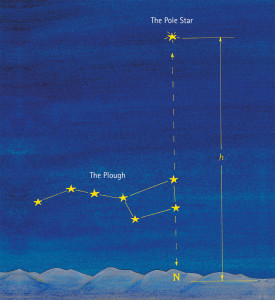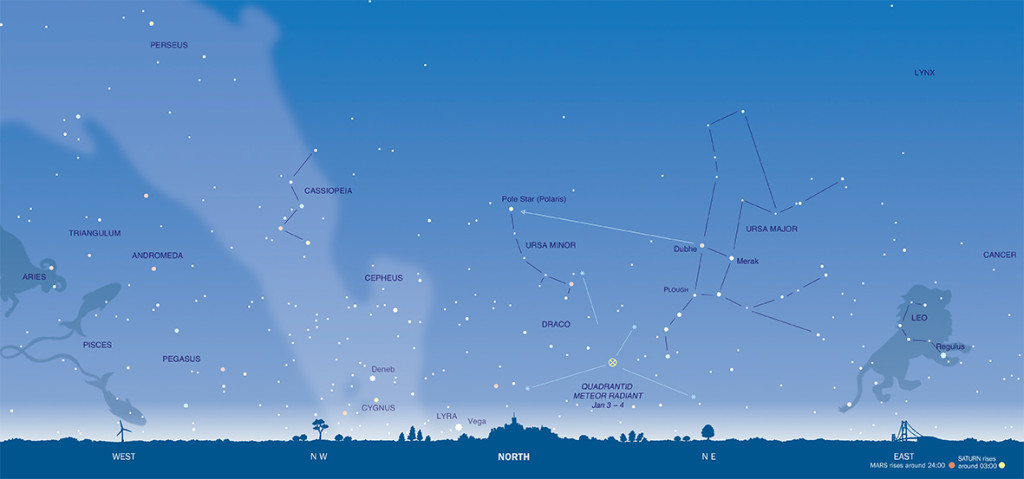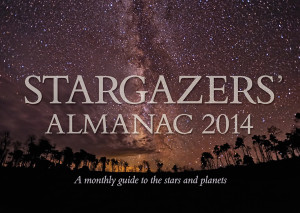The Sky at Night: enjoying naked-eye astronomy
by Floris Books • 8 January 2014 • Philosophy of the Natural World • 0 Comments
Have you been watching the latest series of BBC Stargazing Live with Professor Brian Cox? Inspired to discover the night skies but not sure where to start?
Luckily we here at Floris Books love all things astronomy, so we’ve put together our very own guide to spotting constellations from your back garden. Here’s our pick of the best things to look out for in the January sky from much-loved annual Stargazers’ Almanac, and some exclusive top tips on naked-eye astronomy from new book Astronomy for Young and Old.
Stargazing without a telescope
 To see the stars well, you’ll need to find somewhere dark with a clear all-round view of the sky. This can be difficult in cities, but things are a bit better around the edges of a city, or in a large, unlit park. Try to search out places where there are as few distractions from lights as possible. Cloudless nights are the best for spotting stars, and it’s also easier to see the stars without the glare of a full moon, so a moonless night can be a good time to try stargazing.
To see the stars well, you’ll need to find somewhere dark with a clear all-round view of the sky. This can be difficult in cities, but things are a bit better around the edges of a city, or in a large, unlit park. Try to search out places where there are as few distractions from lights as possible. Cloudless nights are the best for spotting stars, and it’s also easier to see the stars without the glare of a full moon, so a moonless night can be a good time to try stargazing.
On a clear night, you might be able to see about 5,000 stars – all without a telescope! So don’t worry if the view is confusing at first, you can orientate yourself in the sky by getting to know the names of groups of stars and individual stars. One star which always keeps its position is the Pole Star, also called Polaris. In the northern hemisphere, begin by finding the Pole Star and it’s easy to find where north is: if you drop an imaginary line straight down from the Pole Star to the horizon, that is north. Facing north, east is on the right, west on the left, and south is behind. Finding the four directions is the first step to recognising the stars in the sky.
What to look out for during January in the Northern Hemisphere
Dress warmly, brave the cold on a clear January night, and look high above with binoculars for the glittering starfields of Auriga and Perseus. Then, locate the seven famous stars of the Plough, part of Ursa Major, the Great Bear. She prowls along the northern horizon as the night wears on. Find the Pointers, Merak and Dubhe, which indicate the Pole Star, due north and at the same altitude as the observer’s latitude. Any shooting stars (meteors) flashing in the north-eastern sky during early January will probably belong to the Quadrantids, named after the extinct constellation of Quadrans (the Quadrant), near the ‘tail’ of the Great Bear. On those dates, the thin early-evening crescent Moon will not interfere with meteor observing. During the late evening, watch the Sickle of Leo climbing in the east.
About our astronomy books
 Stargazers’ Almanac 2014 is a beautiful month-by-month guide to the night skies. It’s designed specifically for naked-eye astronomy – no telescope required! – making it ideal for beginners, children and backyard astronomers. Available now.
Stargazers’ Almanac 2014 is a beautiful month-by-month guide to the night skies. It’s designed specifically for naked-eye astronomy – no telescope required! – making it ideal for beginners, children and backyard astronomers. Available now.
 Astronomy for Young and Old is the perfect introduction to astronomy for anyone, whether or not they have a telescope. It explains the visible constellations and then explores the sun, moon, planets, comets and meteorites. Colour illustrations and diagrams at every stage help children relate what they are reading to what they can see in the sky. Available from March 2014.
Astronomy for Young and Old is the perfect introduction to astronomy for anyone, whether or not they have a telescope. It explains the visible constellations and then explores the sun, moon, planets, comets and meteorites. Colour illustrations and diagrams at every stage help children relate what they are reading to what they can see in the sky. Available from March 2014.